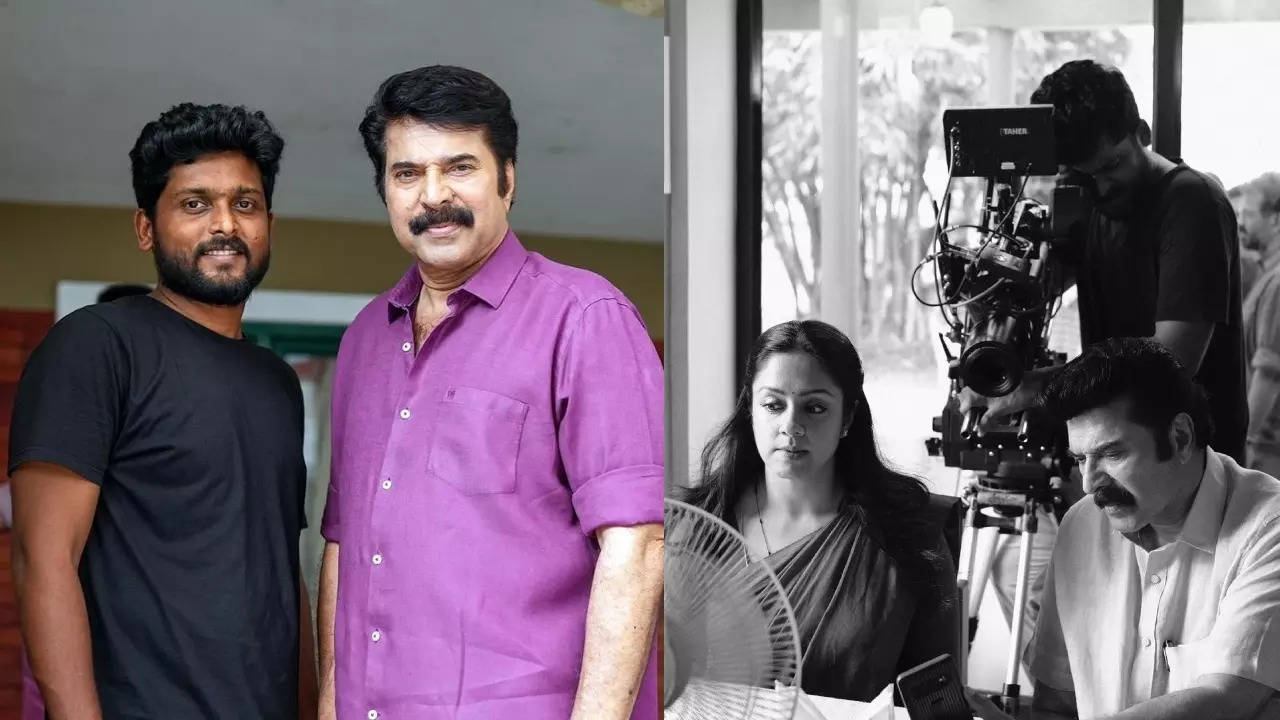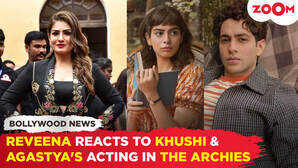EXCLUSIVE! Kaathal The Core Cinematographer Salu K Thomas On Signature Style Of Filming: Don’t Want To Fix In One Box
Kaathal- The Core hit the screens on November 23. The cinematographer, Salu K Thomas, grabbed the limelight with his creativity and touch in Mammootty starrer. In an exclusive chat with Zoom, he talked about the artistic process, the inspiration behind the shots, and his journey while shooting the film.

Cinematographer Salu K Thomas on artistic process, angles in Mammootty's Kaathal: The Core
Ahead of the theatrical release of Kaathal -The Core, Mammootty said that this film will stand out as a groundbreaking movie, even though there are already many cinematic insights into the theme of homosexuality. One important reason is the distinctive setting it takes place and how it has been conveyed to the audience.
Kaathal - The Core is bold, heartbreaking and brave! Each shot of the Mammootty and Jyothika starrer tells us a story. Right from their 20 years of companionship to the opening scene, each shot is worth framing and once again proves how the visual storytelling adds flavour to Jeo Baby's directing. Cinematographer Salu K Thomas is currently in the limelight for his work and in an exclusive conversation with Zoom, he opened up about his signature style, artistic process, and view, with the discussion revolving around his latest film Kaathal.
In Kaathal, a lot happens between the little pauses and silences between conversations. So, what went through your mind when you first read the script?
When I read the draft first, it was very different from the work you're seeing now. The thing that struck me was these two characters who have lived in that house for almost 20 years without talking to each other, with all their insecurities, loneliness and guilt. This house that we are showing has seen all the emotions of these people, even the doors, the windows and the religious figures. We planned on how to give importance to these elements of visual language, especially in the melancholy mood of the story.
Usually, films like these maintain a tone throughout and you did it beautifully. How did you get that conviction?
Basically, the tone and visuals have been inspired by a painter named Tom Vattakuzhy. He is a famous painter from Kerala and pursued the course from Shantiniketan in Baroda. I used to follow his work for a long and was very glad that we have a painter who shows the emotion of our land very beautifully. For me, in this story, I wanted to make Tom Vattakuzhy's universe. I took references from his paintings and made a mood board. There's also a Russian film titled Banishment by Andrey Zvyagintsev and it was also a reference point for us.
When you learned that Mammootty would play the lead role in the film, what were your first thoughts?
I grew up watching Mammootty's films. When I heard, that Jeo Baby was going to approach Mammootty, from that I was very excited. I knew that this film has a very challenging character and if an actor like Mammootty stepped in Mathew's (character played by the actor) shoes, it would go beyond what he expected. So, Mammootty was the perfect choice for the role.
What excited you the most while filming for this film?
The performance that I was watching. Mostly the film was multicam, my batchmate Vignesh used to do the second job and his camera was dedicated to close-ups. So at one point, I was jealous of him because he was getting to see all these performances in the process.
The scene where the camera zooms into Mammootty when he is sitting on the bed all alone, no dialogue nothing. Besides the writing, how did you visually plan for this stretch?
That scene was in an earlier draft a long before. So, the first time I read that scene, I had this shadow of that character, holding onto the wall. And, this was my imagination from the beginning so I didn't go for hard logic about lighting or about expressionism. Some people were asking me about the shadows, to be honest, I don't know. Maybe in real, that shadow might not be there, but in my imagination, that shadow was there. And I think that worked very well for the film. There is no dialogue. And all these years, all his loneliness is coming in that in that scene that one-shot.
The film doesn’t literally tell us the 20 years of companionship between Matthew and Omana, but the frames in their home and small conversations did the job. How did you make sure to show us their companionship with your lens?
During the reading sessions, we understood Mathew and Omana's companionship and they both like each other. But from the beginning, we shot both of them together very little. We rarely see both of them together in the feature. So, for those static frames, I wanted to convert it in a way that they're not moving forward. They're stuck. Also in one scene, we can see an Omana typing on the computer, and Mammootty is sitting on the other side of the bed. So in that scene, the placement of characters is just like both of them are facing away from each other, but they have a balance between them.
Plus, there are two shots in which we can see Omana and Mathew lying on the bed alone. There the emptiness/darkness on their side shows their incompleteness and unbalanced situation.
We've heard that most cinematographers have a distinct style, do you also have a particular style?
I don't want to fit inside a box that this is my style. But, subconsciously, we have our distinct styles and I want to break out of it. In every cinema, I try to bring something new. It's actually an extension to the visual language of The Great Indian Kitchen’ and ‘Old Age Home’.
What are your thoughts on show, don’t tell storytelling? We have seen in The Great Indian Kitchen (which was brilliantly shot, every small scene we’ve felt), then Kaathal.
It came to me with so much opportunity in visual storytelling. In The Great Indian Kitchen, there are very less dialogues, lesser than Kaathal. Kathal is more of a talk when it comes to the court scene. But, in the first half, the visuals tell the story.
It was very challenging. When we first read the script, Jeo Baby and I developed a language on how to show it to the community.
Before the shoot, we discussed with the director and developed a language. In Kaathal as well, Jeo had this idea about moving between characters and then this slow movement and other things. I think visual storytelling is very impactful.
I have read this in an interview of Pankaj Kumar, "Most of the Indian films are radio dramas." And, it's firmly true!
How is it working with director Jeo Baby after The Great Indian Kitchen?
We're close friends. I know what he wants from a filmmaker. We don't discuss much on set, before the shoot, we set our language and in the end, it's his trust in me.
The first scene introduces Mathews's father, Omana and Mathew in a church, it starts with God and stops at Omana and later Mathews. We can see the connection, but what was your thought behind it? Was it pre-planned?
He had this idea about these language movements from one character to the next to the next. This starting scene was always there in the first draft itself. Okay, so he told me that I would like to start from Chachan(Father’s character) and go to Omana and then go to Mathews. But, I didn't want to just start the film from Chachan(Father’s character). So, that's why we started it from the altar. Because religion plays a very important role in the film. Also, because this film starts with church only, it is one major character, then we show the altar and the cross, and then we start moving towards the characters.
What are the future projects you’re working on?
There's a Malayalam film I'm shooting - Parakramam. It's a coming-of-age drama and more into the commercial. I really enjoyed shooting the film, two more weeks of shots are left. There are a other few projects in the pipeline.
End of Article
Subscribe to our daily Entertainment Newsletter!
Entertainment Videos





02:10
Raveena Tandon addresses CONTROVERSIAL statements regarding Khushi Kapoor and Agastya Nanda in The Archies

03:53
Urfi Javed Flaunts her Topless Style | Jennifer Mistry's HEARTWARIMNG note for TMKOC

36:56
Sana Raees Khan's post-Bigg Boss 17 eviction interview unveils her connection with Vicky Jain

07:26
Aoora, the K-Pop singer, describes himself as 'PSYCHO' before entering the Bigg Boss 17 house as a wild card

05:02
Pushpa Impossible update: Pushpa dazzles Devi with her impressive English writing abilities














